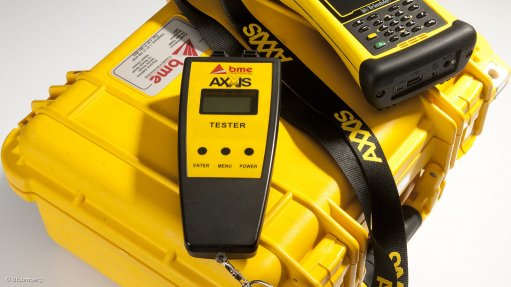
TESTED TRUE BME’s Axxis digital initiation system, BlastMap III software and electronic detonators were used in six successful test blasts in Atlanta, in the US
With growth for the Axxis blasting technology having increased substantially each year over the past five years, Africa-based blasting and explosives leader BME has, in enhancing the brand’s growth, taken its first steps into the US market.
The company conducted six successful test blasts in Atlanta, in the US, in collaboration with experienced blasting firm Controlled Blasting Incorporated (CBI), which employed BME’s Axxis digital initiation system, its BlastMap III software and its locally manufactured electronic detonators, explains BME global product manager for Axxis Tinus Brits, who spoke at the BME Annual Drilling and Blasting Conference, in Pretoria, last month.
The blasts were successfully conducted in these recent tests – providing an important indication of satisfaction and acceptance by US blast experts, according to Brits.
He added that CBI president Larry Gilmore was impressed with the results and the added benefits of using BME planning and initiation systems.
Gilmore has more than 30 years’ experience in blasting, and has served as president of the International Society of Explosives Engineers; he is also chairperson of the Georgia Blasting Safety Advisory Committee in the Georgia Insurance Commissioner’s Office.
CBI conducted the blasts in various applications – one of which was close to Piedmont Hospital in downtown Atlanta. According to Brits, this was a particularly stringent test of the Axxis system’s ability to facilitate careful control of fly-rock and vibration levels.
“The CBI blasting team appreciated the testability of our systems – where any problems with detonators are picked up before the blast – as well as their ability to simulate the blast before it is initiated,” Brits said, adding that the team also enjoyed the ease of use of the BlastMap software and the Axxis blast box.
Using electronic detonators allows for detonations to be precisely timed within milliseconds of each other, eliminating out-of-sequence intiations for more controlled blasting and lower vibrations.
To further enhance vibration control, BlastMap can detect any instances where two holes are inadvertently set to fire at once; avoiding this simultaneous firing also controls vibration and improves the quality of the blast.
In blasts ranging in size from 24 to 121 detonators, BME and CBI worked together to ensure that all the blasts were carried out within the specified vibration levels.
“In line with US regulations, the contractors ran seismographs during each blast, which could transmit vibration reports to a mobile phone application for real-time monitoring,” Brits noted.
He explained that all the blasts – which also included a housing development site, a building site and a road-widening project – were performed within the legal vibration limits set by the authorities. This performance also confirmed the blasters’ confidence in BME products.
Explosives distributor Powderman Products supplied the explosives products to CBI, while international blast engineering and consulting firm RA McClure provided the technical services for the blasts. RA McClure president Robert McClure is a regular speaker at BME’s annual drilling and blasting conference in Pretoria.
While there is currently a plant that allows for the assembly of the Axxis system in South Africa, Brits noted that BME would consider options for an assembly facility in North America, should the volumes for Axxis justify the need for such a facility.